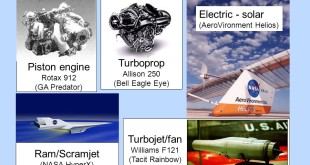Introduction: In today’s military landscape, personnel face the challenge of performing increasingly complex tasks while interacting with sophisticated machines and platforms. To address this, DARPA launched the Perceptually-enabled Task Guidance (PTG) program in 2021, aimed at developing advanced AI technologies to provide real-time guidance and support to military personnel. By …
Read More »The Future of HR: Embracing Technology and Innovation for Successful Talent Management
Every organization, large or small, uses a variety of capital to make the business work. Capital includes cash, valuables, or goods used to generate income for a business. For example, a retail store uses registers and inventory, while a consulting firm may have proprietary software or buildings. No matter the industry, all …
Read More »Human Augmentation technologies making us “superhumans,” or Human 2.0
Augmented Human refers to a concept that involves enhancing or extending human abilities using advanced technologies such as artificial intelligence, biotechnology, robotics, and other emerging technologies. The term “augmented” implies that the human being is being improved or enhanced in some way, often beyond what is considered normal or natural. …
Read More »UAV Propulsion Technologies: Fueling Long-Endurance Commercial and Military Missions
Introduction Unmanned aerial vehicles (UAVs) have evolved from hobbyist toys to critical tools with applications spanning across various industries. As the demand for UAVs with extended flight endurance continues to grow, propulsion system technologies have risen to the challenge. This blog article explores how cutting-edge UAV propulsion systems are enabling …
Read More »DARPA ASTARTE provides a real-time, common operational picture of adversary A2/AD airspace
The airspace above future battlefields is expected to be increasingly congested with large numbers of unmanned aerial systems, manned aircraft, munitions and missiles filling the skies. The situation gets more complicated when considering that the usage of the airspace by all actors will increase significantly in the future, resulting in …
Read More »Safeguarding the Skies: US Department of Defense’s Cutting-Edge Approach to Countering Small Unmanned Aircraft Systems (sUAS) Threats
Introduction The world has witnessed a significant rise in the use of small unmanned aircraft systems (sUAS), commonly known as drones, for both commercial and recreational purposes. While these advancements have brought about numerous benefits, they also pose new security challenges. The increasing potential for sUAS to be used maliciously …
Read More »Internet of Medical Things (IoMT) in the Military: How Real-Time Health Monitoring is Maximizing Soldier Performance
A new paradigm, known as the Internet of Things (IoT), has an extensive applicability in numerous areas, including healthcare. IoT stands for the “Internet of Things.” It refers to the network of physical devices, vehicles, appliances, and other items that are embedded with sensors, software, and connectivity, allowing them to connect …
Read More »Rising Above the Skies: Exploring the Counter-Drone Market and Addressing the Growing Threat of Drones
Introduction: In recent years, the skies have witnessed a remarkable transformation with the proliferation of drones, heralding a new era of aerial technology. Drones, or Unmanned Aerial Vehicles (UAVs), have found applications in various fields, from photography and filmmaking to agriculture and surveying. However, with their growing popularity, concerns have …
Read More »Next-Generation Naval Defense: Unveiling Autonomous Armed Swarm Boats for Unmatched Anti-Submarine Warfare and Mine Countermeasures
In recent years, naval defense has witnessed a transformative shift with the emergence of autonomous armed swarm boats. These cutting-edge vessels represent a significant advancement in anti-submarine warfare (ASW) and mine countermeasures (MCM), promising to revolutionize the way nations secure their maritime borders and protect vital waterways. By harnessing the …
Read More »Super Capacitors: Powering Innovations from Electric Transport to Military Directed Energy Weapons
Introduction: In the world of energy storage, supercapacitors have emerged as a game-changing technology. With their unique properties and capabilities, they are revolutionizing diverse sectors, ranging from electric transport to military applications like directed energy weapons. In this blog article, we will explore how supercapacitors are fueling innovations in these …
Read More » International Defense Security & Technology Your trusted Source for News, Research and Analysis
International Defense Security & Technology Your trusted Source for News, Research and Analysis




